
Doctor Revealed That Clogged Ears Can Be One of the Symptoms of a Deadly Disease
Rates of a certain cancer have risen sharply in recent decades, yet many people remain unaware of the warning signs. Its symptoms are often mistaken for allergies, dental problems, or even a common cold. Alarming numbers of cases are now appearing in individuals with no clear risk factors at all.
Clogged ears are often blamed on seasonal allergies, wax buildup, or a recent flight. But experts say that, in rare cases, they could be signaling something far more dangerous. A leading oncologist has identified it as one of several subtle warning signs of a fast-moving and often misunderstood disease affecting the head and neck.
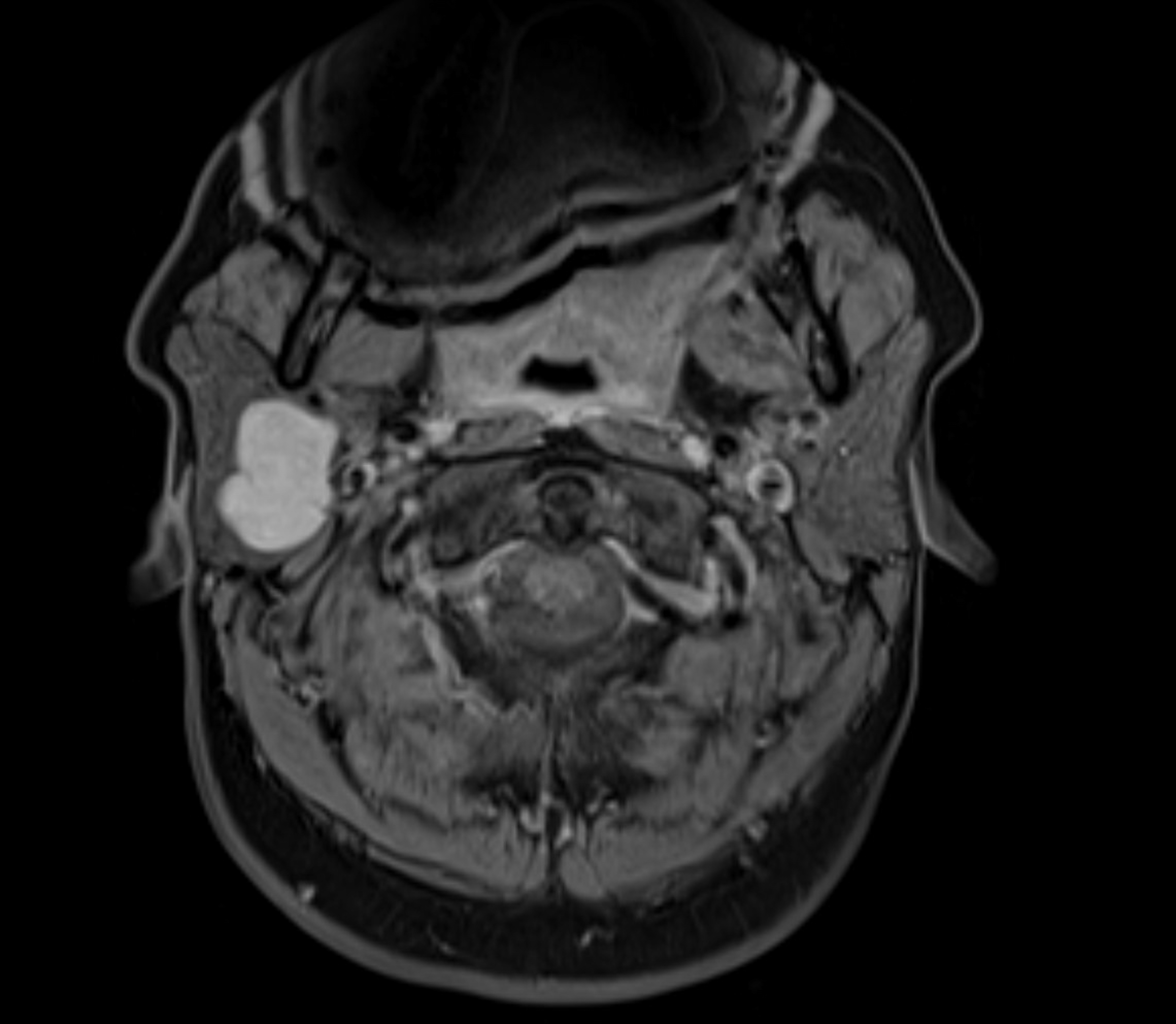
Axial multiparametric MRI scan showing a parotid gland tumor | Source: Getty Images
Despite growing awareness of serious health risks, many of these early indicators continue to be misread or ignored. With cases on the rise and risk factors shifting, doctors are now calling for closer attention to symptoms that fall outside the usual checklists. As the full picture emerges, it's becoming clear that the line between harmless and life-threatening isn't always easy to spot.
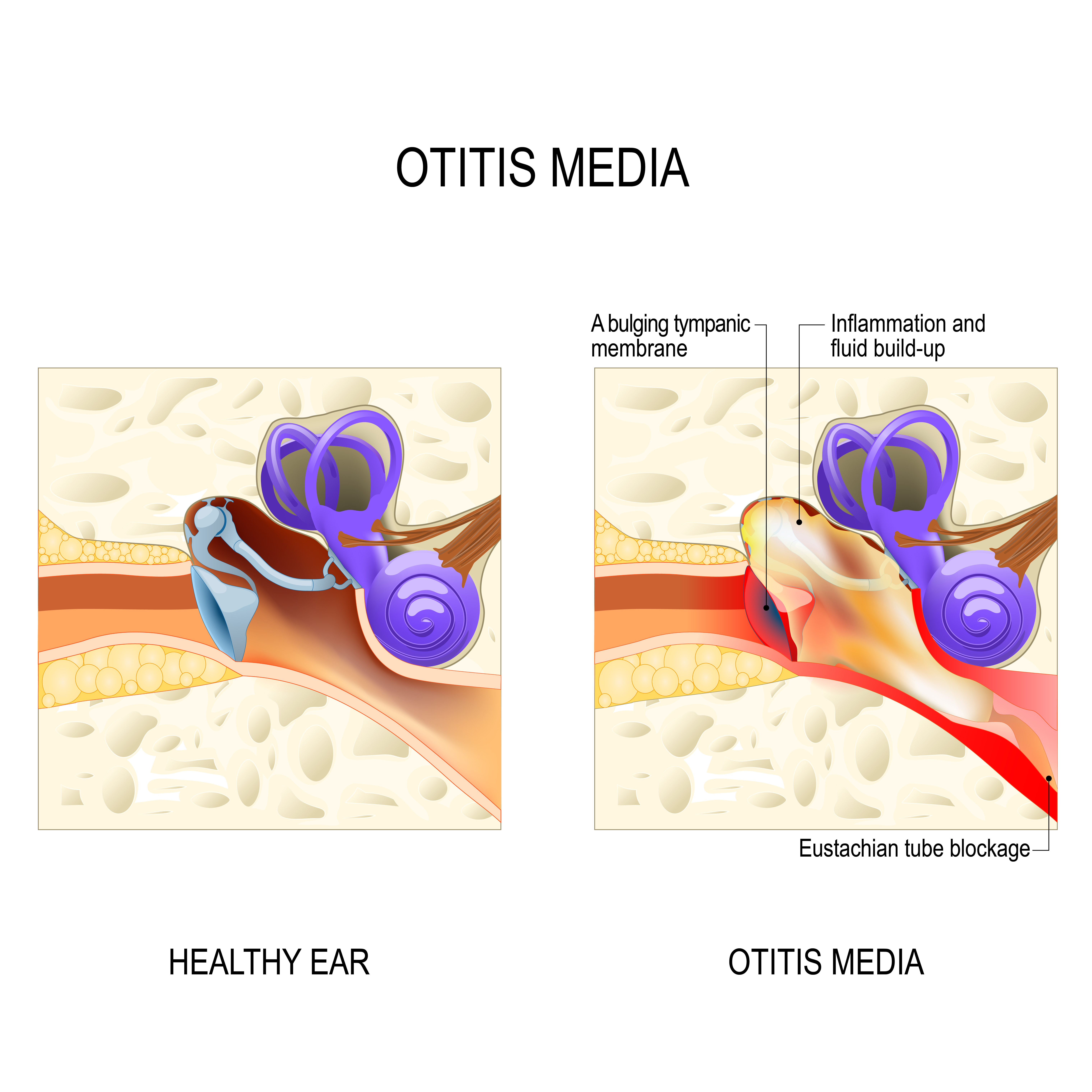
Illustration comparing a healthy ear to one with otitis media, a condition causing inflammation and fluid buildup in the middle ear | Source: Getty Images
A Silent but Aggressive Group of Cancers
Head and neck cancer is not a single disease but a group of cancers that can develop in areas like the throat, nose, mouth, and sinuses. Most of these cancers originate in the squamous cells — the thin, moist cells that line the surfaces inside the head and neck.
Together, they are classified as head and neck squamous cell carcinoma, or HNSCC. Though these cancers make up just under 5 percent of all cancer diagnoses worldwide, they have been growing in prevalence.
In the United Kingdom alone, nearly 13,000 people are diagnosed with head and neck cancer each year. The number has increased by more than 30 percent since the 1990s.

Digital visualization of thyroid cancer showing the affected gland and nearby anatomical structures | Source: Getty Images
The disease has earned a reputation for being deceptive. Its symptoms can be so mild or familiar that patients often dismiss them. Cleveland Clinic notes that signs such as a sore throat, ear pain, or difficulty swallowing can easily be mistaken for colds, allergies, or other routine issues.
For this reason, many people do not seek medical attention until the cancer has reached a more advanced stage, making treatment more difficult. This is one of the reasons experts are now urging the public to pay closer attention to symptoms that persist, especially when they don't respond to typical remedies.
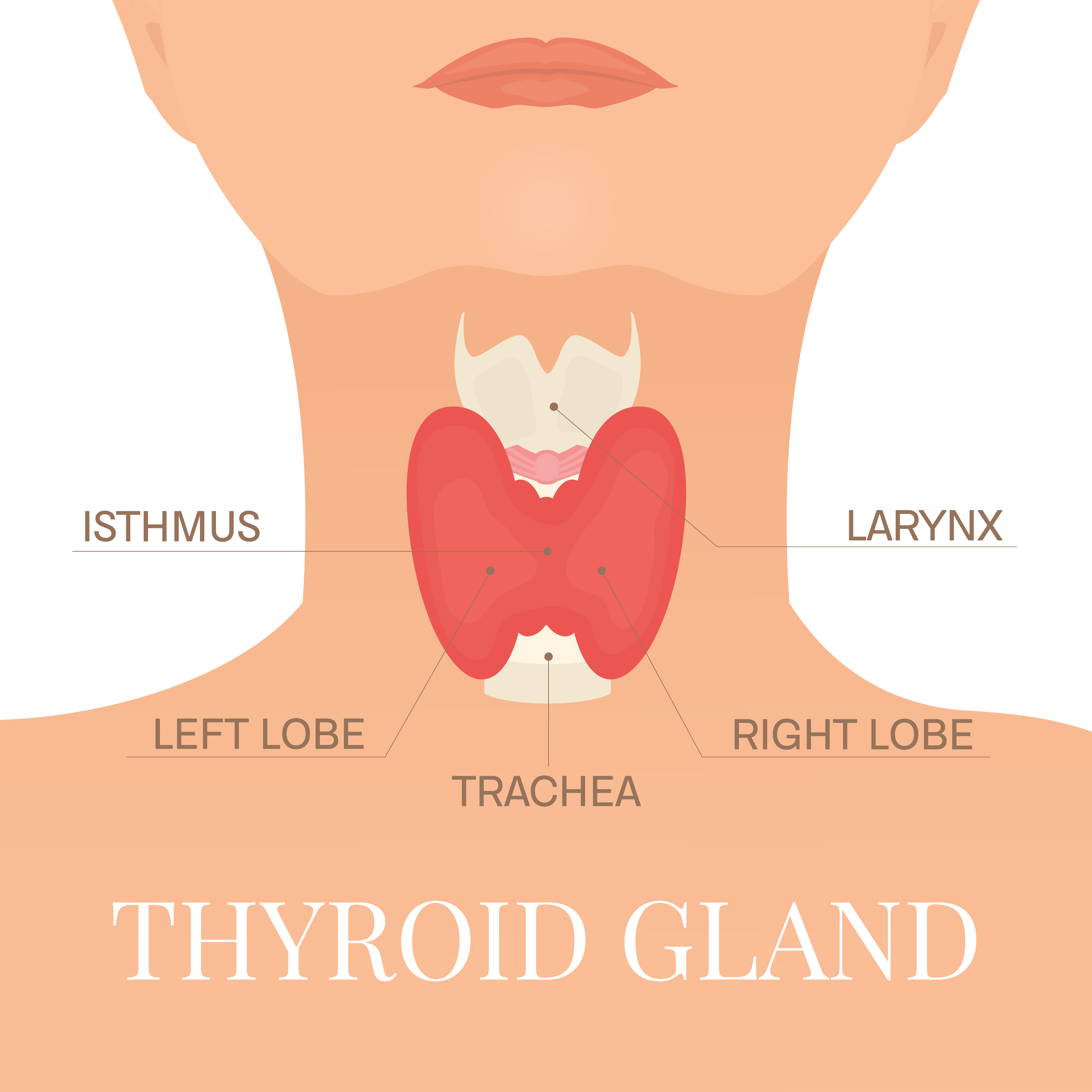
Visual representation of thyroid anatomy and its placement in the neck | Source: Getty Images
One Doctor's Warning: 'Get It Checked Out'
One of the physicians speaking out is Dr. Jiří Kubeš, a specialist in head and neck tumors and the Medical Director at the Proton Therapy Center in Prague. With extensive experience in oncology, Dr. Kubeš emphasizes that earlier diagnosis leads to significantly better outcomes.
"It is considered one of the fastest growing types of cancer in the world," he said, "but there is still a worrying lack of awareness around head and neck tumours." He added that one of the most commonly overlooked warning signs is a persistent sensation of ear blockage.

Woman holding her ear in discomfort, possibly experiencing tinnitus | Source: Getty Images
According to Dr. Kubeš, "This is a similar feeling to the one you might get after diving into a swimming pool. Stubborn earache also could be a sign there's cancer around that area."
That sensation is one of several subtle clues that may point to this cancer. Dr. Kubeš also noted that resistance or swelling when touching a part of the neck could be an indicator. "Don't just shrug off an ulcer," he warned. "Get it checked out by your GP as it could be a cancerous lesion."

MRI of the cervical spine showing suspected spondylosis with nerve root compression, reviewed by a physician for signs of radiculopathy and chronic neck pain | Source: Getty Images
Subtle Clues That Mimic Everyday Ailments
Head and neck cancer can develop in several distinct areas, each with its own symptoms and complications. Most of these cancers begin in the moist linings of the upper aerodigestive tract, and depending on their location, they can impact a person's ability to speak, eat, breathe, or even express emotion through facial movement.
Healthcare providers categorize these cancers based on the specific part of the head or neck where they begin. One of the most common forms is oral cancer, which can form in the lips, gums, tongue, inner cheeks, roof, and floor of the mouth, or behind the wisdom teeth.

A sick woman rests on the couch, managing cold or flu symptoms with medication and common remedies for upper respiratory infections | Source: Getty Images
It often presents as persistent sores, bleeding, or discolored patches that don't heal. Pain in the teeth and gums may also signal this type of cancer, which can easily be mistaken for routine dental problems in its early stages. Patients sometimes experience facial pain or headaches that won't go away.
More advanced signs may include a lump in the neck, mouth, or throat, frequent nosebleeds, or blood in saliva or phlegm. One of the most commonly overlooked symptoms is a persistent sore throat. It may last for weeks and mimic a viral illness.
While these symptoms can stem from less serious conditions, healthcare providers emphasize the importance of having them evaluated without delay.

Man sitting and holding his ear in pain from a severe earache | Source: Getty Images
A Changing Risk Profile
For decades, head and neck cancers were most commonly linked to tobacco and alcohol use. About 70 to 80 percent of cases worldwide have been associated with smoking cigarettes, cigars, or using chewing tobacco.
Heavy alcohol consumption, especially when combined with tobacco use, was considered another major driver of risk. These habits remain significant contributors, particularly in older adults who developed them over time. But in recent years, the risk profile has shifted in unexpected ways.
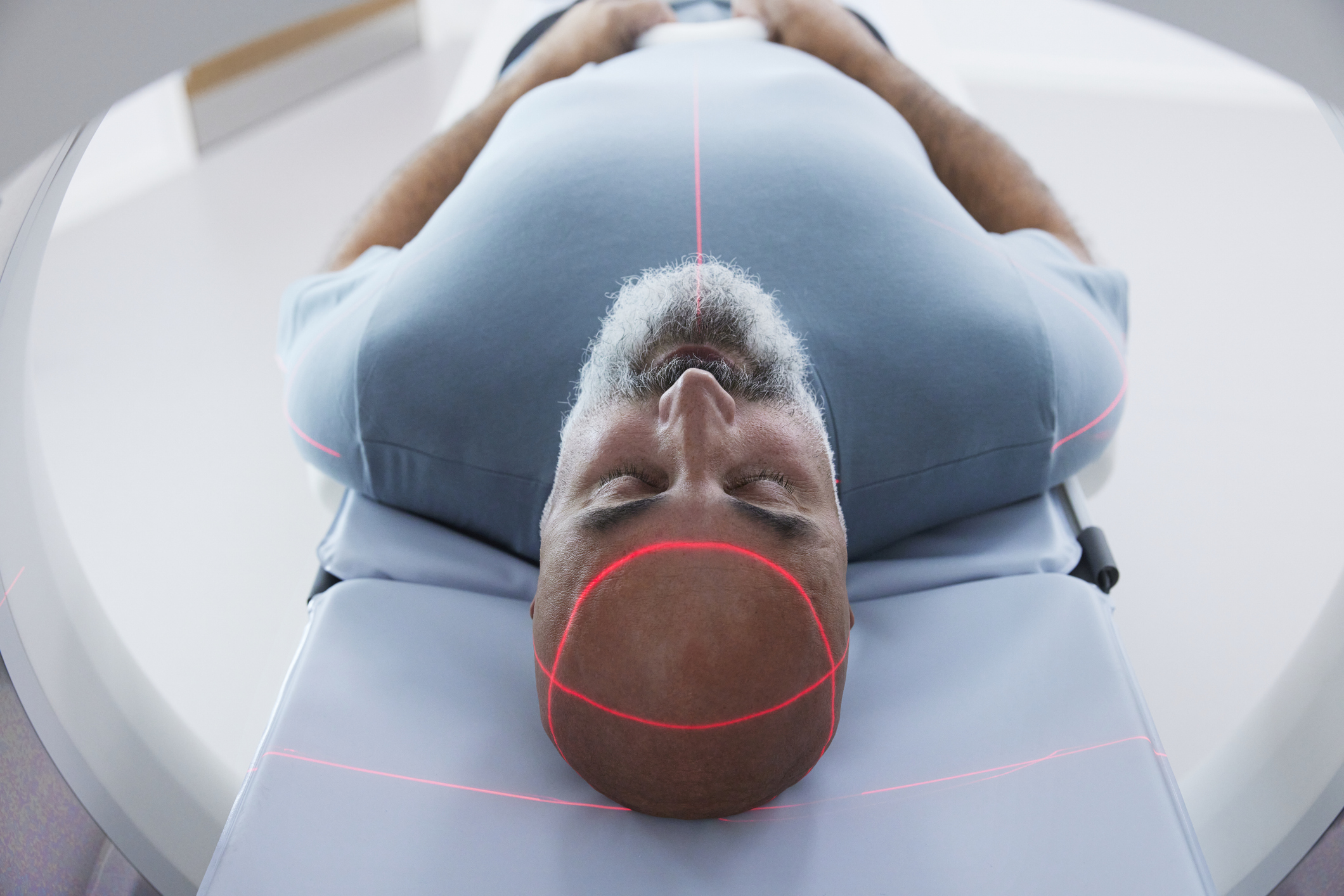
Man undergoing a brain scan inside a CT or MRI machine, with red lasers ensuring proper alignment for detecting tumors or other abnormalities | Source: Getty Images
Increasingly, doctors are diagnosing patients who have no history of smoking or drinking. One of the main reasons for this shift is the growing role of human papillomavirus, or HPV, a common sexually transmitted infection.
Once thought of primarily as a cause of cervical cancer, HPV is now the leading cause of head and neck cancers in many developed countries, including the United States.

Doctor uses a digital tablet to explain brain scan results during a clinical consultation | Source: Getty Images
HPV and the Rise in Younger Patients
As risk factors evolve, so does the profile of those most at risk. While the disease still occurs most often in males over 50, the number of younger adults being diagnosed is on the rise.
Many of these patients lack traditional risk factors such as tobacco or alcohol use, but they have been exposed to HPV, a common, often symptomless infection that can remain dormant for years before triggering disease.

Doctor studies cervical spine X-rays to assess spinal health and detect conditions like cervical spondylosis or thyroid involvement | Source: Getty Images
This rise in HPV-linked head and neck cancers reflects a broader trend that has emerged over the past two decades. As rates of tobacco use decline in the U.S., HPV-related cancers have increased, especially among individuals under 50.
In other parts of the world, regional practices have also influenced cancer rates. In Southern and Southeast Asia and the Pacific Islands, chewing betel nuts is a widespread habit. This practice is known to account for more than half of head and neck cancer cases in those areas, making it a major global concern.

Woman in visible discomfort discussing earache symptoms during a consultation | Source: Getty Images
The Many Faces of One Disease
Cancers can also occur in the salivary glands, which are responsible for producing saliva. These tumors are less common but can cause swelling, numbness, or pain in the area around the jaw and ears.
Another site is the nasal cavity and paranasal sinuses, the hollow spaces behind the nose, where symptoms may include chronic congestion, nosebleeds, or facial pressure that resembles sinusitis.
Other types include nasopharyngeal cancer, which affects the upper part of the throat behind the nose, and oropharyngeal cancer, which occurs in the middle part of the throat, including the base of the tongue and tonsils. Both are frequently linked to HPV and may cause difficulty swallowing, a lump in the throat, or changes in speech.
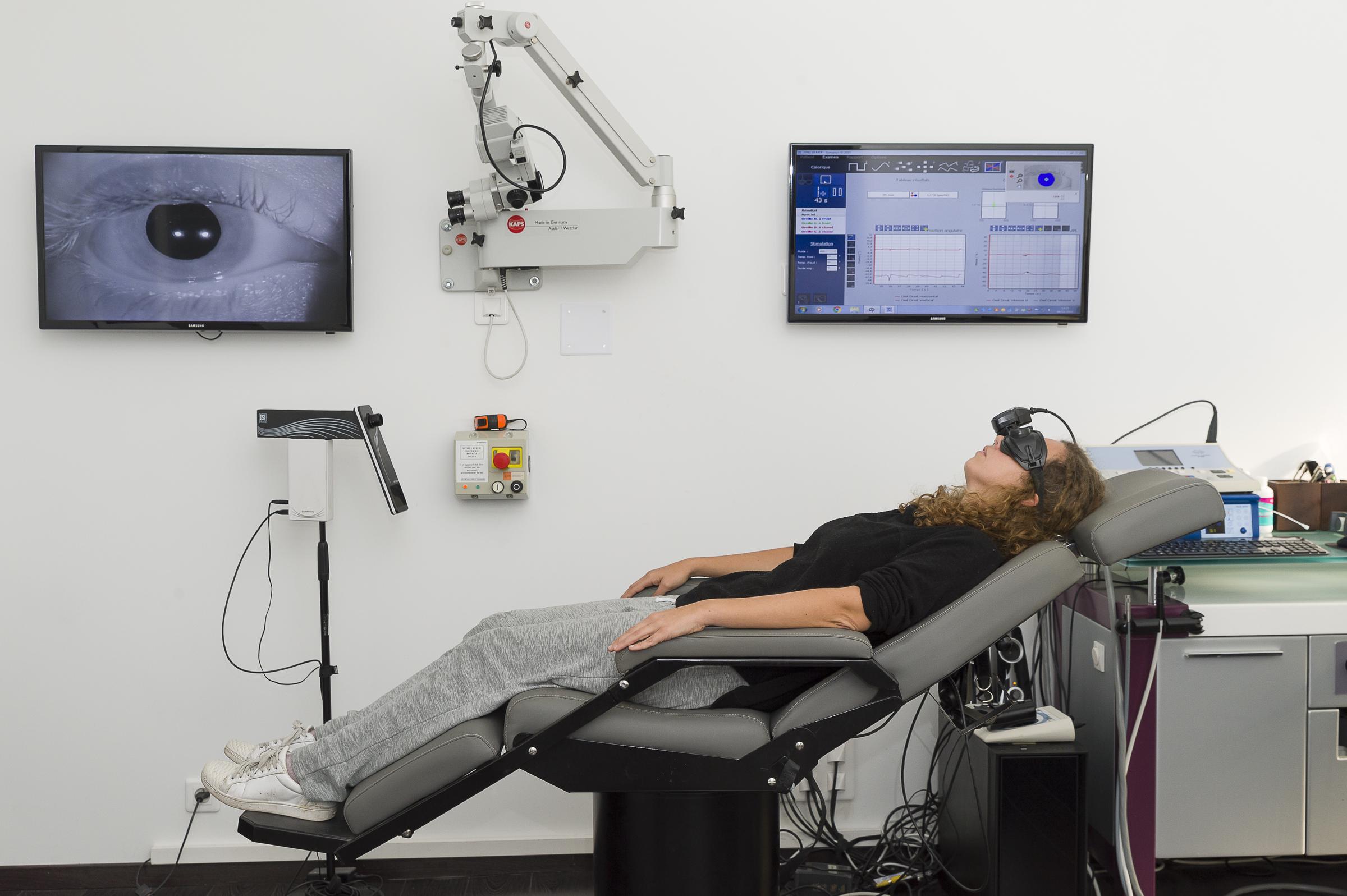
Woman undergoing vestibular function testing during an ENT (ear, nose, and throat) evaluation | Source: Getty Images
Hypopharyngeal cancer, located in the lower part of the throat, and laryngeal cancer, affecting the voice box, are also part of this group. These cancers can cause hoarseness, breathing difficulty, or a chronic sore throat. Because these areas are essential to speech and breathing, tumors here often affect a person's quality of life even before they are diagnosed.
Each of these types has its own set of challenges, and early diagnosis is key to preserving both function and long-term health. Doctors work to determine the exact location and depth of the cancer to guide treatment planning and avoid unnecessary damage to nearby structures.

Doctor positions patient for a diagnostic maneuver commonly used in ENT evaluations, possibly for vertigo or vestibular assessment | Source: Getty Images
How Head and Neck Cancer Is Treated
Treatment for head and neck cancer depends on the location of the tumor, how far it has spread, and the patient's overall health. The primary goal is to eliminate the cancer while preserving vital functions such as speech, swallowing, and facial movement.
Doctors often use a combination of treatments to achieve the best possible outcome. Whenever possible, surgery is used to remove the tumor along with a margin of healthy tissue to reduce the risk of recurrence.
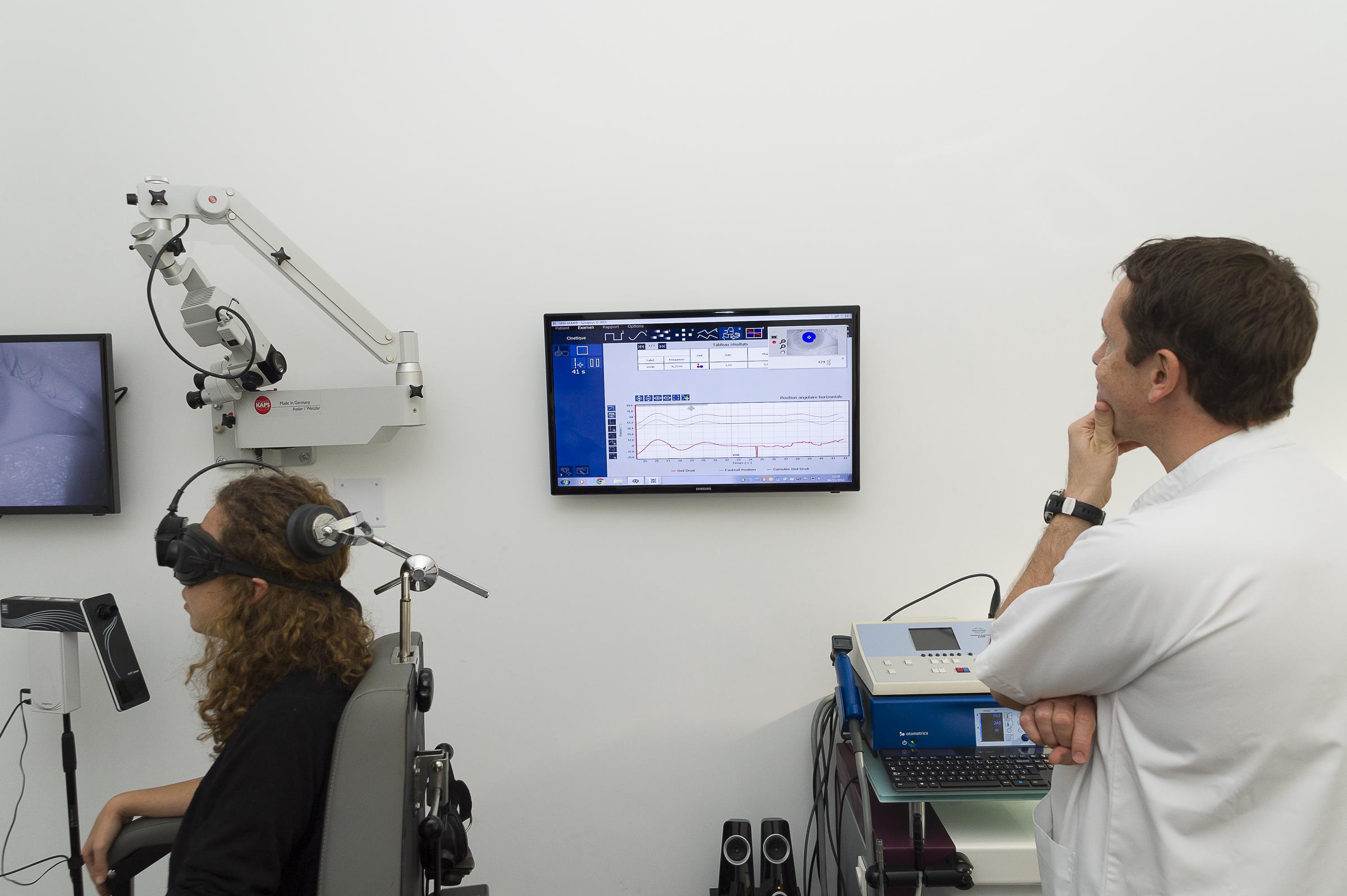
Clinical evaluation of vestibular function with video-assisted diagnostics during an ENT consultation | Source: Getty Images
In cases where cancer has spread to the lymph nodes, surgeons may also perform a neck dissection to remove affected tissue. This approach can be highly effective, especially when the disease is caught early, but recovery may involve physical therapy and other support to regain normal function.
Combining Forces: Radiation and Chemotherapy
Radiation therapy is another key treatment, particularly for tumors that are difficult to remove or when surgery might damage essential structures. The most common form is external beam radiation therapy (EBRT), which uses targeted X-rays to destroy cancer cells.
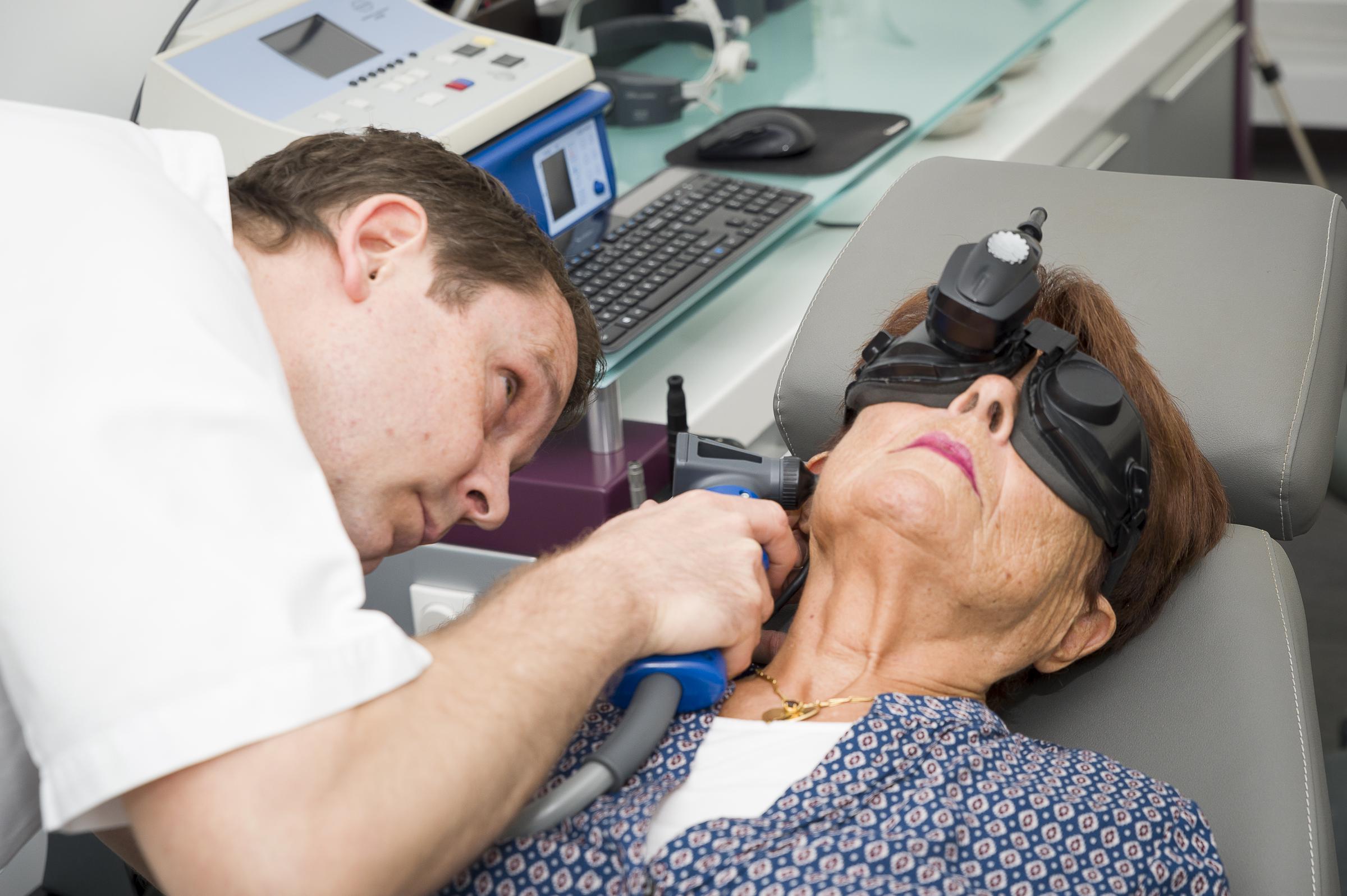
Physician performs an ear examination while patient undergoes balance testing with infrared diagnostic goggles | Source: Getty Images
Radiation may be used alone or combined with other treatments, and in some cases, it's administered after surgery to kill any remaining cancer cells.
Chemotherapy is typically reserved for more advanced stages or when the cancer has spread beyond its original site. It involves the use of powerful drugs that target cancer cells throughout the body and are administered in cycles.
For head and neck cancer patients, chemotherapy is frequently paired with radiation therapy to increase its effectiveness. This approach, while aggressive, can significantly reduce tumor size and help control the disease.
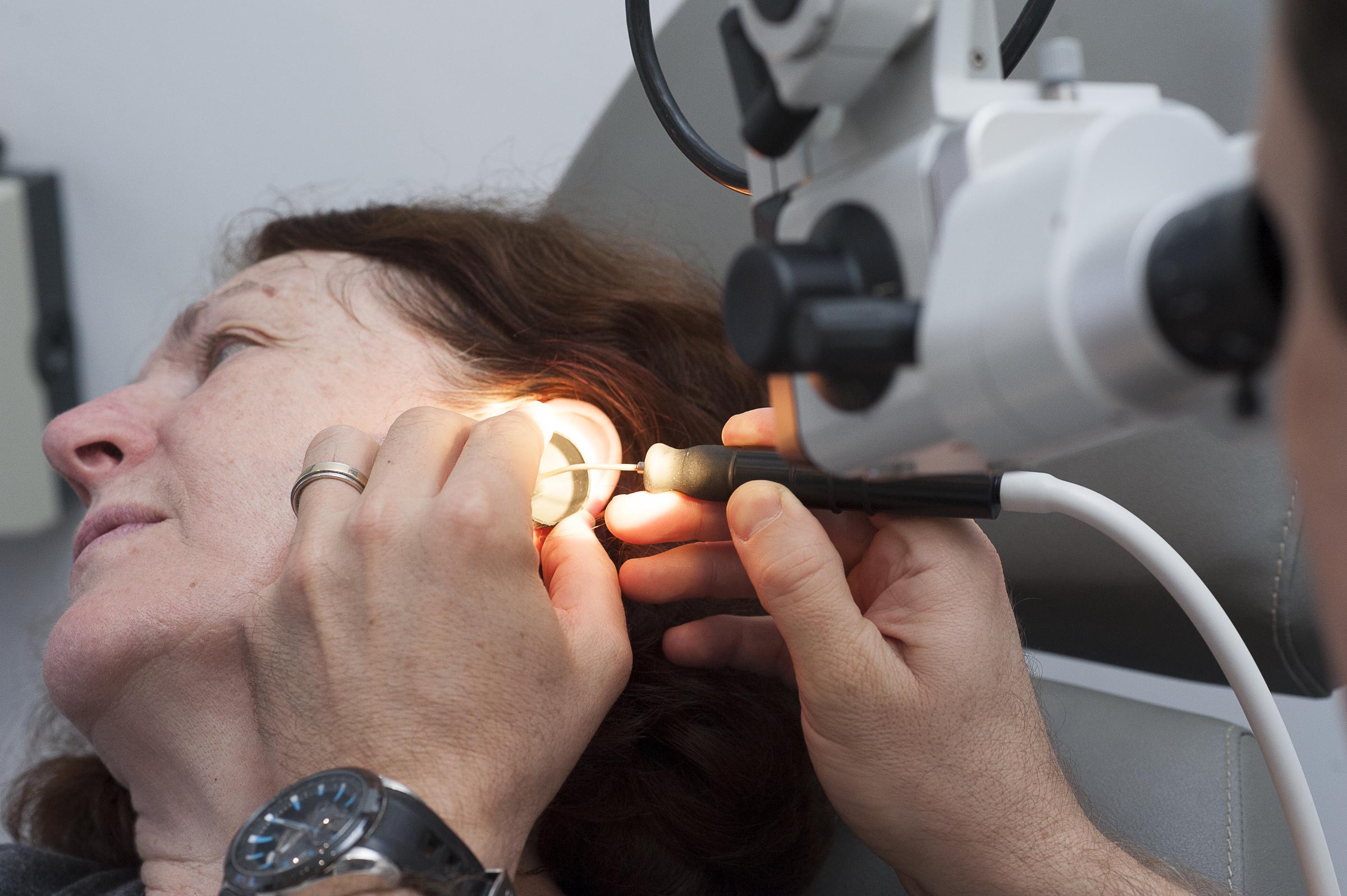
Detailed ear examination performed by an ENT doctor using precision tools and a surgical microscope | Source: Getty Images
Advanced Options: Targeted Therapy and Immunotherapy
For cancers that are difficult to treat or have returned after initial therapy, doctors may turn to targeted therapy or immunotherapy. Targeted therapy involves drugs that block specific proteins or genetic signals essential for the growth of cancer cells.
FDA-approved options for head and neck cancer include Cetuximab (Erbitux®) and Larotrectinib (Vitrakvi®), both of which are used alongside other treatments to improve response rates.
Immunotherapy, on the other hand, helps the body's immune system recognize and destroy cancer cells. Drugs like Pembrolizumab (Keytruda®) and Nivolumab (Opdivo®) are used in cases where the cancer has spread or come back after previous treatments.
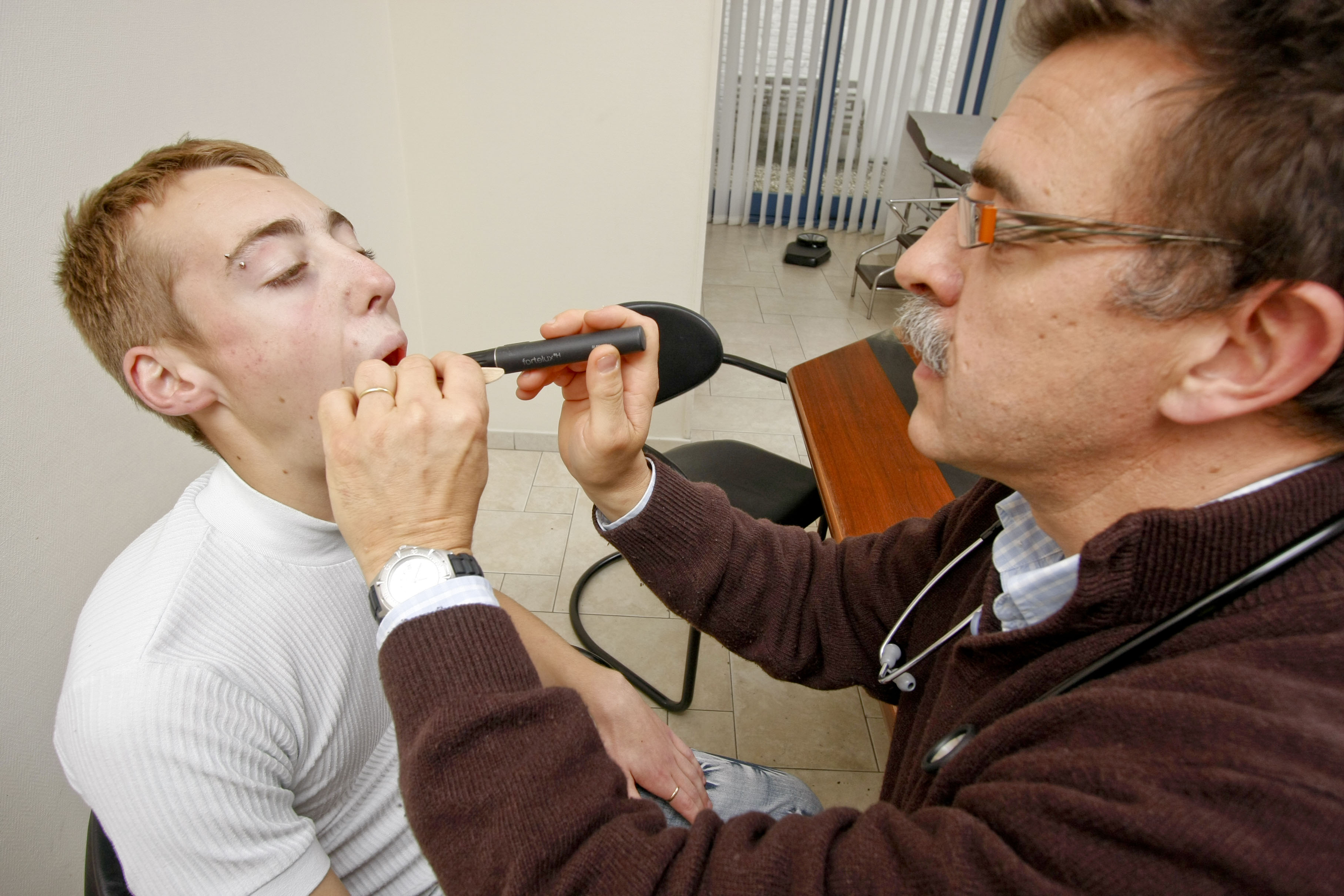
Healthcare provider performing an oral and throat inspection during a patient visit | Source: Getty Images
These therapies are often offered through clinical trials and are typically considered for patients with limited treatment options or those who require a more personalized approach.
In addition to direct cancer treatments, patients are often referred to palliative care services. These teams collaborate with oncologists to manage symptoms, relieve pain, and enhance the patient's quality of life, regardless of the disease stage.

Young woman holding a tissue to her nose, possibly experiencing sinus discomfort or a nosebleed | Source: Getty Images
Early Detection Still Makes the Biggest Difference
Throughout his career, Dr. Kubeš has witnessed firsthand how head and neck cancer can advance quickly when early signs are ignored. "Earlier diagnosis is absolutely crucial," he said. "The sooner we can identify head and neck cancer, the better the outcome."
Knowing the early warning signs and understanding how they can differ from person to person can save lives. Whether it's ear pressure that won't go away, a lingering sore throat, or subtle changes in the mouth, these are signals that should not be ignored.

Physician explains diagnostic imaging results to a concerned patient during a sinus consultation | Source: Getty Images
With growing awareness, there is hope that more individuals will seek answers early and that fewer will face the disease in its most advanced stages.
The information in this article is not intended or implied to be a substitute for professional medical advice, diagnosis or treatment. All content, including text, and images contained on news.AmoMama.com, or available through news.AmoMama.com is for general information purposes only. news.AmoMama.com does not take responsibility for any action taken as a result of reading this article. Before undertaking any course of treatment please consult with your healthcare provider.
